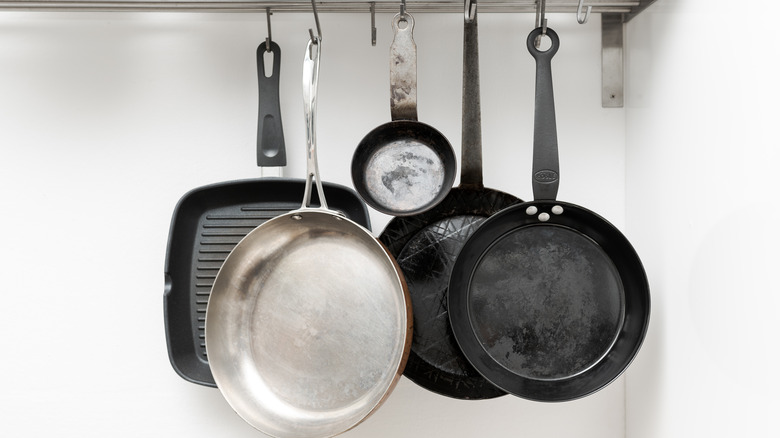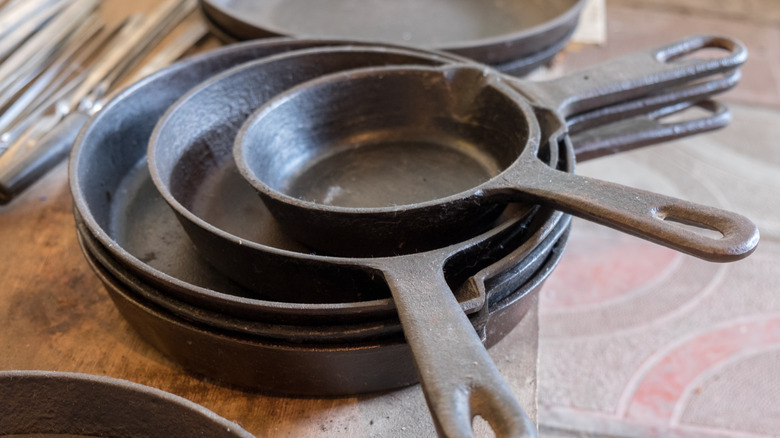The Best Way To Store Your Beloved Cast Iron Skillet
An organized kitchen is an efficient kitchen, which is why culinary gadgets, gizmos, and cookware should all have a designated storage space in your kitchen. That said, some tools are easier to stow than others. Take, for example, your tried-and-true cast-iron skillet. While it may be revered for its sturdiness and great heat retention, the material can be fairly high maintenance, complicating how it should be kept. Lucky for you, we've created a guide to help demystify skillet storage once and for all.
When it comes to storing cast iron cookware, you're probably overthinking things. The reality is that a frequently used skillet can simply be placed on the stove between uses. However, this solution isn't as suitable for skillets that are used less often — it also won't work if you're the owner of multiple pans. In this case, we recommend keeping cast-iron skillets on a pantry shelf or tucked away in a kitchen cupboard alongside your other pots and pans. The question is, why? Since these areas are relatively cool and dry, they can help prevent cast iron from rusting. Not to mention that the shelves (especially low-level shelves) can effectively support the weight of skillets. Plus, they're also easily accessible spaces, minimizing the risk of fallen cookware and potential injury.
While where you store cast-iron skillets is important, how you keep them is equally essential. Beyond location, there are a few more factors to consider when storing the sturdy skillets in order to keep the cookware pristine.
Before storing cast iron skillets, do this
Properly cleaning the cookware is the first step to keep cast iron in top-top shape. For the best results, wash the skillet by hand with warm water and a gentle dish soap. You might also need to use a soft sponge to scrub off any residues before rinsing. Rather than let cast iron air dry, we'd advise promptly drying the skillet with paper towels or a dishcloth to reduce corrosion. In fact, you can also briefly heat the pan on the stove to further eliminate moisture. Once the cleaned and cooled cast-iron skillet is totally dry, it can be stored.
Organizing racks are an effective way to pile skillets on shelves as they allow air circulation and limit rust formation. But, depending on the amount of available space, this isn't always feasible. Instead, stacking skillets (unless they're enamel-coated) can save space. Just remember that prior to piling skillets, it's best to place a paper towel in between the cookware to collect excess moisture and keep cooking surfaces clean. For added insurance, you can even toss a few silica gel packets in the cupboard or pantry to ensure dryness. Then, keep skillets stowed until you're ready to use them.
At the end of the day, storing cast-iron skillets doesn't need to be difficult. So long as you follow our list of storage dos and don'ts, the cookware will keep for a lifetime — and then some!

